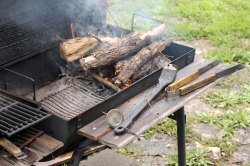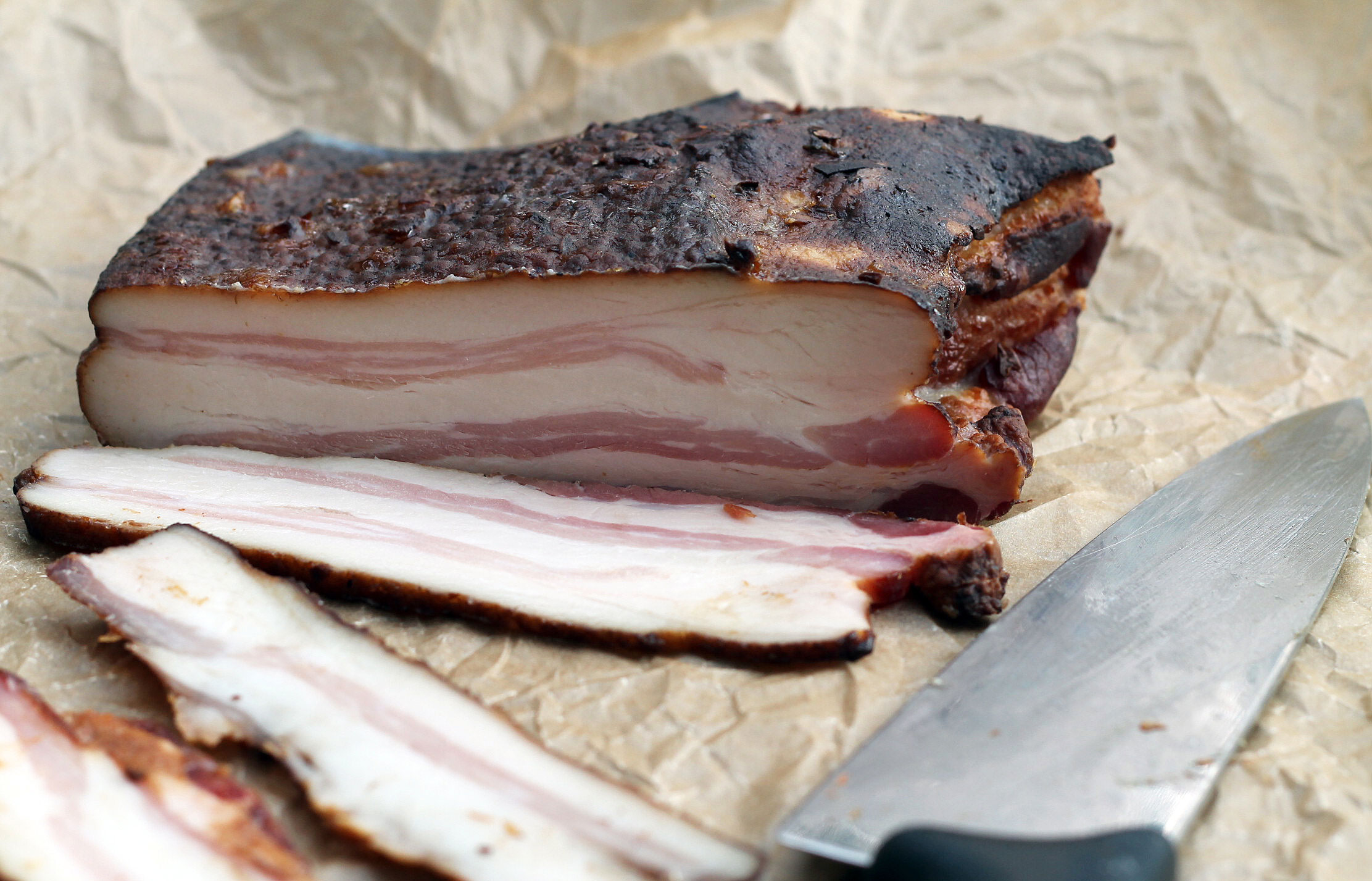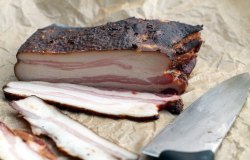
All photos by Meredith Bethune.
Early man probably just dangled meat over a fire to preserve it, but today smoking is needlessly complicated. The modern process is full of jargon and gear and often discourages some would-be meat-smokers from trying at all.
But there is another way. In fact, I’d recommend trying it with this bare-bones equipment before spending a fortune on a smoker. You won’t win any barbecue competitions with this beginners’ method, but it’s more than sufficient to produce delicious homemade bacon and charcuterie with locally raised meat.
What you’ll need
Charcoal grill: A charcoal grill is an adequate vessel for smoking. Large grills with two grates are best because the meat can be placed further away from the heat source, but you should experiment with a small grill if that’s what you have. If your grill doesn’t have a built-in thermometer, you can place a meat thermometer in the hole in the top.

Wood: Consider using fallen wood from your yard or neighborhood. It’s environmentally responsible and free. Try hardwoods like oak, pecan, and mesquite, but don’t use resinous woods like pine or cedar because they impart an unpleasantly strong flavor. Premade wood chips are also convenient if you have a small grill.
Metal pans: You’ll need a metal baking pan or disposable tray to hold water. The water moderates the fire’s temperature by absorbing some of the fire’s heat, and creates steam that prevents the meat from drying out.
Meat thermometer: It’s crucial that you periodically gauge the temperature of the meat while it’s smoking. Poultry and pork should reach at least 160 degrees F while beef should reach about 150 degrees F. If the meat greatly exceeds those temperatures it will probably dry out.
Getting started
Smoking is like a seesaw. It doesn’t require much hands-on attention; it’s a fine balance between maintaining the heat at low certain temperature without extinguishing it. Focus on getting as much smoke flavor on the meat without cooking it too aggressively. It doesn’t require your full attention, but you’ll want to do this at a time when you’re planning to hang around the house for a few hours.

1. Pile the wood in a designated area of the grill. If you have one grate, place the metal pan next to the wood. If you have two grates, place the metal pan above the wood on the closest grate, but on the opposite side. Fill it with water.
2. Ignite the wood to start a fire. Wait 30 minutes or so for it to die down to a temperature under 275 degrees F.
3. Place the meat on the grate above the pan of water. Close the grill cover and start smoking!
4. Check the heat every 30 minutes or so, but don’t worry about maintaining an even temperature. If the heat soars above 275 degrees, try to cool down the fire by adjusting the vents and restricting oxygen flow to the fire without extinguishing it. You can also try sprinkling some water on the fire.
5. Every hour or so, poke a thermometer into the center of the meat and read the temperature. Remove it from the smoker when it reaches its desired temperature. This should take about two to four hours for bacon and four to six hours for pastrami.
A word about nitrites: It’s not mandatory, but I use pink salt, or sodium nitrite, as a precaution against botulism poisoning when smoking meat at low temperatures. Although rare, the bacteria spores that produce the botulism toxin can reproduce in this environment.





